Calling For Exponential Leaders to Change the World
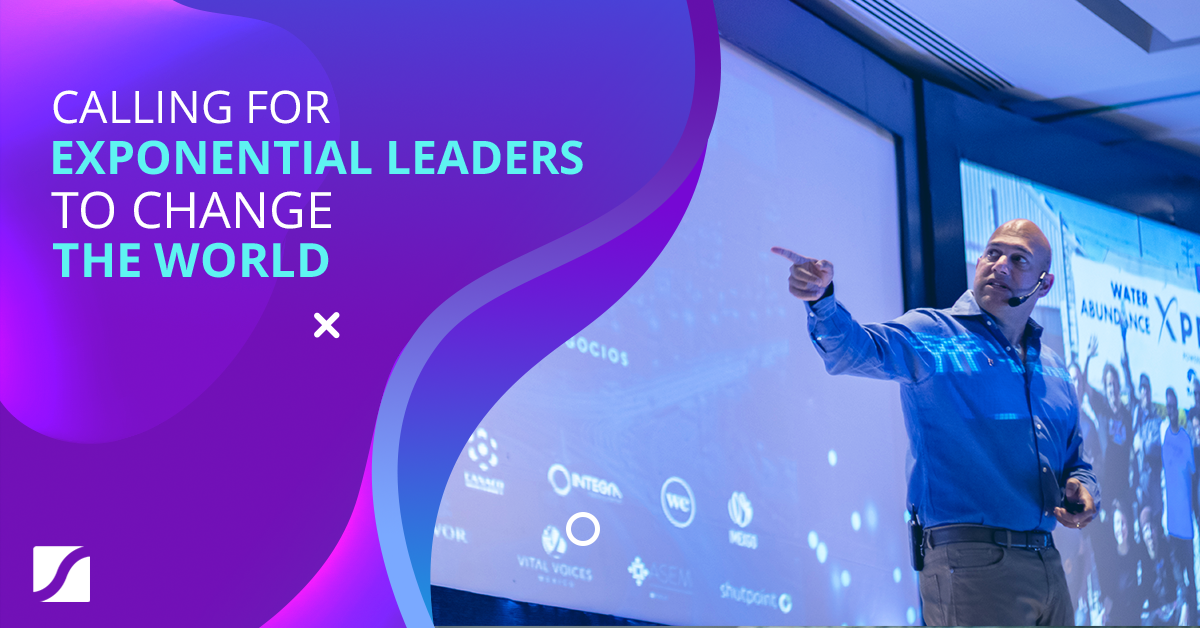
When I was at XPRIZE Visioneering 2018 as a member of the board, I couldn’t help but wonder:
How many of today’s companies are actually prepared for just how dramatically the world is changing?
You see, XPRIZE Visioneering brings together companies that have created new exponential technologies that are reshaping society. What I witnessed there blew my mind.
For example, Skysource / Skywater Alliance developed a technology that can extract 2,000 liters of water per day from the atmosphere using 100% renewable energy, at a cost of no more than two cents per liter.
The impact of extracting clean water from air is massive. And the business opportunities around this are staggering.
The question for business leaders now becomes, if you were to build a business around this technology to create massive transformative impact, how would you go about it?
If your plans begin with creating a 5-year business plan, let me tell you right now that your efforts are doomed to fail. The world is changing too fast for traditional business models and organization structures to survive.
In a recent webinar with Daniel Marcos, I explained why today’s organizations need to let go of everything business schools taught them and embrace a new form of exponential leadership to thrive in the upcoming decade of disruption.
If you missed the webinar, this article will walk you through the key takeaways.
But before we get into the juicy bits of how you can break the status quo with disruptive innovations that change the world, let’s first get some context about how the world economy is changing and why a new approach is crucial for your future success.
How the World Economy Has Flipped Upside Down
Our economic world has historically been predominantly built upon businesses where value creation comes from the physical world, such as extracting resources or assembling raw materials.
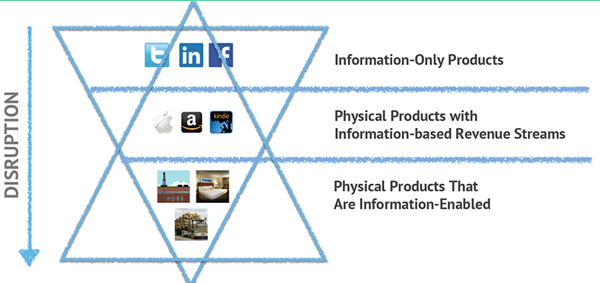
Today, this model has flipped. We are now seeing more information-based companies creating the disruptions and solutions changing our world.
When the economy flips from the material to the digital world, three really important things happen that impact all industries and all technologies:
- Marginal cost drops to zero.
Take photography, for example. Digital cameras can take hundreds of photos without needing to pay a dollar per click as you once had to with film cameras. - Scarcity changes to abundance.
With marginal costs eliminated, what was once scarce is now abundant. You can observe how people take multiple selfies or photos of the same thing because there is no extra cost to do so. - The problem space changes.
This is very subtle, but very important from a business perspective. In photography, you used to have business models built around the scarcity of super expensive cameras or photography courses. That’s because you want to make sure every shot is perfect, because every click has a cost.
However, once you move to digital photography, all those business models disappear. Now, the problem is people have hundreds upon hundreds of photos to organize. The problem space has shifted. New business models to organise your digital memories have emerged to solve this problem space, such as Google Photos, Dropbox and Evernote.
What This Means Moving Forward
We have observed a huge shift in the photography industry over the past decade as digital cameras and digital phones get better — and cheaper — year after year. But which technologies do you suppose are set to disrupt industries in the next decade?
The signs are already here. For example, here a few technologies whose costs have dropped exponentially while their capabilities have only accelerated.
DNA sequencing
With the costs of DNA sequencing dropping rapidly, a new commercial genomics sector has emerged. A person can now have their genome sequenced to discover their heritage, health risks, or optimal diet that’s customized to their genetic makeup.
And all this is possible for under $600. It takes less than a week to complete. It can even be ordered online. Five years ago, this would have been considered impossible.
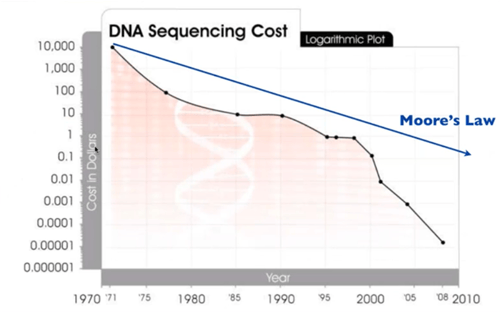
Solar energy
Solar energy’s capability has been doubling every two years. At this pace, we will be able to deliver 100% of world energy supply with solar in 12 years. It’s no exaggeration to say that this will transform the global geopolitics and business models around fossil fuels dramatically.

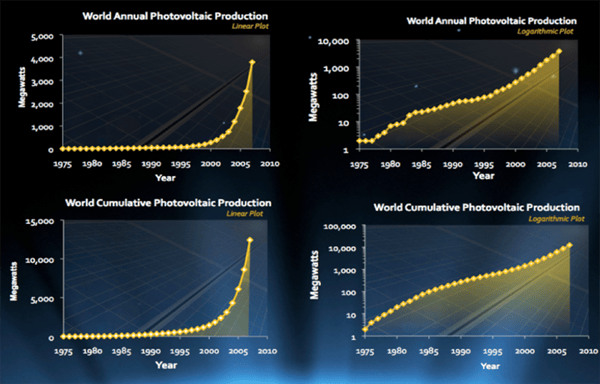
Blockchain
Blockchain is open source and free, with virtually infinite possibilities to disrupt multiple industries, such as banking, real estate, legal, healthcare, cryptocurrency, startup, politics, video, and education to name a few.
Disruptive technologies such as DNA sequencing, solar, and system algorithms used to be so expensive that only huge organizations or governments could afford them. Today, they are accessible for any company to take advantage of, which means anybody can innovate and leapfrog the status quo.
Is Your Organization Prepared to Disrupt the Status Quo?
On the other side of all of these disruptive technologies is massive business opportunity.
However, not every company is prepared to handle the rapid pace of change. Organizations that uphold the traditional top-down hierarchy designed for the efficiency and predictability of the industrial age will fall behind in today’s new disruptive economy.
Organizations that will accelerate forward in this new landscape are architected for agility, flexibility, adaptability, and speed. This new organization structure is recognized as the Exponential Organization (ExO), and they’re performing 10 times faster than the peers in their sector.
Here’s just a few of them.
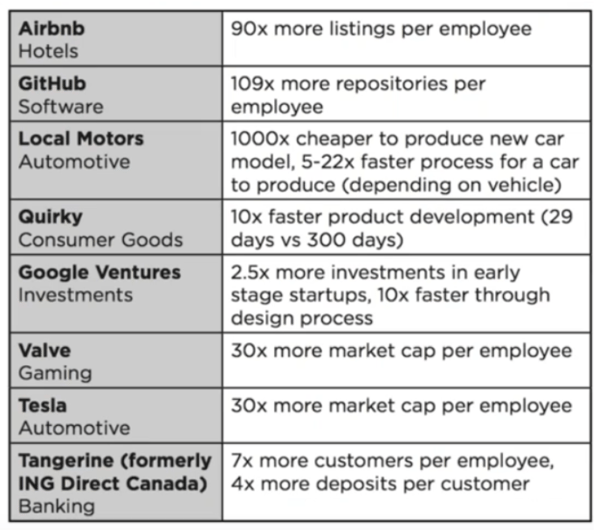
After extensively studying these ExOs, we have distilled 11 common attributes that make them capable of leading disruptive innovations and creating massive, transformative impact.
Death of the Five-Year Business Plan
The world is moving so quickly and with so much uncertainty. By the time you finish your five-year business plan, it’s outdated. That’s why the ExO companies which are thriving operate on an entirely different model that consists of an MTP and 10 other attributes.
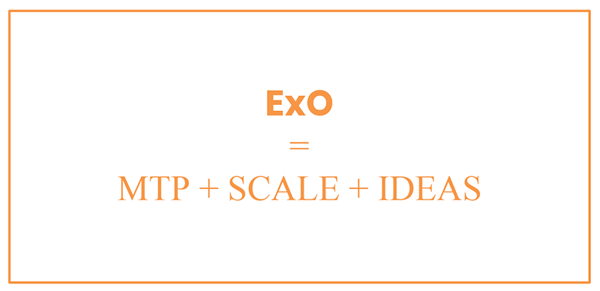
MTP
This is the Massive Transformative Purpose. It’s the first and most important attribute. Here are a few examples of MTPs of some ExOs:
- Google: Organize the World’s Information
- Uber: Everybody’s Private Driver
- Ted: Ideas Worth Spreading
- CocaCola: Open Happiness
- Singularity University: Positively Impact One Billion People
- Planetary Care: Building planetary resilience through regenerative agriculture
The MTP is not just a tagline. It’s about being deeply purpose-driven. What fundamental problem do you want to solve? Since it’s aspirational, the MTP is great for retention and recruitment. It’s also your company’s north star to keep your ship aligned in a rapidly changing environment.
The five qualities of that make a good MTP are:
- Uniquely yours
- Highly aspirational
- Neither narrow nor technology specific
- Aimed at the heart and mind
- Declared with sincerity and confidence
SCALE
There's five externalities that all ExOs will use some combination of to keep a very small footprint of resources at the core and scale very quickly. These five SCALE attributes are:
S — Staff-on-Demand
C — Community & Crowd
A — Algorithms
L — Leveraged Assets
E — Engagement
Staff-on-Demand: Minimize full-time staff. Outsource tasks.
Community & Crowd: If you build communities and you do things in public, you don’t have to find the right people — they find you.
Algorithms: ExOs leverage data and algorithms to scale in ways that weren’t possible even 5 or 10 years ago.
Leveraged Assets: Hold on to what’s absolutely critical. Outsource everything else.
Engagement: Enabling collaborative human behaviour (social behaviour) to engineer the results you want from your community.
IDEAS
Next are five internal mechanisms that allow you to drive the internal control framework and to drive culture. These five IDEAS attributes are:
I — Interface Processes
D — Dashboards
E — Experimentation
A — Autonomy
S — Social Technologies
Interface Processes: ExOs have very customized processes for how they interface with customers and other organizations. An example of this is Apple's strict rules on what reaches its app store.
Dashboards: A real-time, adaptable dashboard with all essential company and employee metrics, accessible to everyone in the organization.
Experimentation: The implementation of the lean Startup methodology of testing assumptions and constantly experimenting with controlled risks.
Autonomy: Self-organizing, multidisciplinary teams operating with decentralized authority.
Social Technologies: Social technologies, or collaborative technologies, allows organizations to manage real-time communication amongst all employees. This allows conversations and collaborations between employees to happen easier, faster, and in an organized fashion to facilitate smoother execution of tasks.
Case Study
Let’s talk about Haier, a Chinese appliance manufacturer. You would think that an organization in this industry would be using a very traditional structure. But this company is the poster child of Autonomy.
Their CEO realized that they were not meeting their corporate goals. But instead of making slight shifts to their strategy, they did something crazy.
Haier saw that the traditional model that was no longer working for them, so they decided to dismantle their entire organizational structure. They abandoned hierarchical command and control to adopt a system that favors agility.
They broke their 80,000 workforce into approximately 2,000 autonomous teams of about 40 people each. Each team decides want they want to do to achieve their MTP - without any centralized planning and little oversight.
With 2,000 autonomous teams, Haier was able to constantly reinvent themselves and create industry innovations. They soon catapulted into the fastest-growing provider of appliances in the world.
If you were to go to any business school, they’d tell you that you can’t run an organization this big without a centralized product strategy and inventory management. Yet here it is in China.
Exponential Technologies Call for Exponential Leaders
We have entered a totally new world of possibilities. To take advantage of it, organizations must evolve from a linear structure and into an ExO model architected for agility, flexibility, adaptability, and speed.
At the heart of every organization however are its leaders. That’s why, above all else, there is a need for leaders to update their leadership and lead their organizations into a path that will leverage these exponential technologies to positively impact billions of people.
To learn more about how you can become an exponential leader in this new world, check out the information below on the Exponential Organizations Master Business Course.
.
Transform Your Business into an Exponential Organization
The Exponential Organization Master Business Course provides you with professional feedback, peer support, accountability and external perspective (we all know how it is hard sometimes to think “outside of the box”) so you can apply the ExO methodology successfully in your organization.
Within the program, you’ll be getting the highly-qualified guidance and support from Salim Ismail, Kent Langley, and ExO Coaches, plus an extremely dynamic and valuable network of leaders from all over the world.
Go here to know more about the course and be notified when the new cohort starts.



-1.jpg)